South Carolina isn’t just about beautiful beaches and historic charm; it’s a haven for anglers seeking adventures on freshwater and saltwater. From the vast, shimmering expanse of Lake Murray to the intricate network of tidal creeks and marshes along the coast, South Carolina offers a bounty of fishing opportunities. This comprehensive guide dives into the top fishing spots across the state, providing detailed information on target species, ideal seasons, hidden gems, and the unique allure of each location.
Lake Murray: A Bass Bonanza
Best Seasons: Year-round, with spring (March-May) and fall (September-November) being particularly productive for largemouth bass.
Target Species:
- Largemouth Bass: Renowned for its healthy largemouth bass populations, Lake Murray is a paradise for bass fishing enthusiasts. The numerous coves, islands, and points with submerged vegetation provide ideal spawning and feeding grounds for bass. Whether you prefer finesse techniques with jigs and worms around cover or the excitement of topwater lures, Lake Murray offers something for every bass angler.
- Striped Bass: While largemouth bass reigns supreme, Lake Murray shouldn’t be overlooked for striped bass. Spring (March-May) is prime time to target these migratory fish as they journey upstream to spawn. Trolling with live bait or downrigging with lures near dam releases can be productive techniques.
- Crappie, Catfish, and Bluegill: Beyond bass, Lake Murray offers a diverse fishery. Crappie fishing thrives year-round near sunken brushpiles and docks, providing fast-paced action. Catfish enthusiasts can find channel catfish and blue catfish in the lake’s deeper areas, particularly during the summer months. Bluegill are plentiful throughout the lake, making for a fun-filled experience for anglers of all ages.
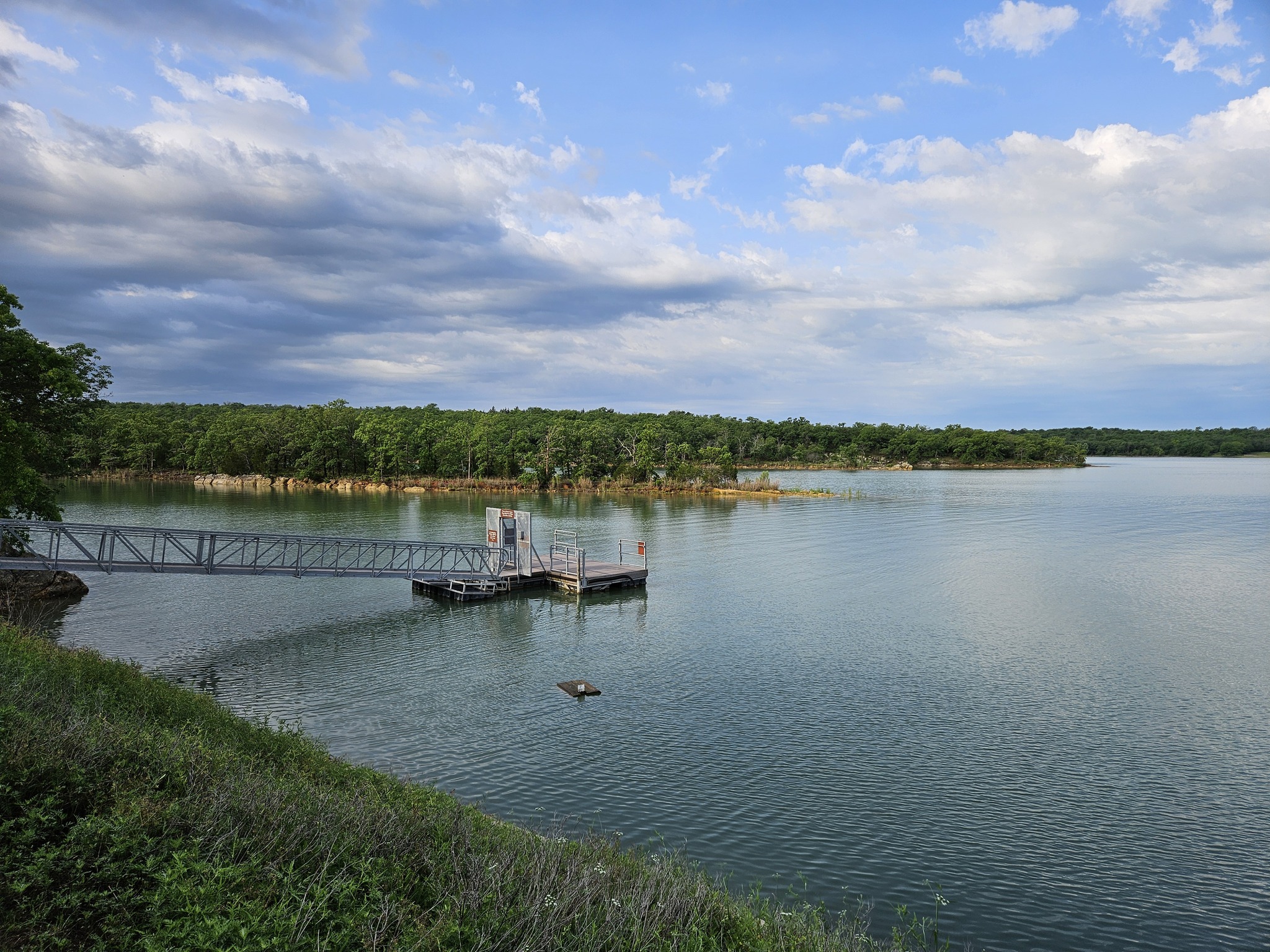
Beyond Fishing: Lake Murray is a versatile recreational destination. Boating is a popular activity, allowing you to explore the vast expanse of the lake and access prime fishing spots. Swimming is a refreshing option on hot summer days at designated swimming areas. Hiking and biking trails around the lake offer scenic views and opportunities to connect with nature.
Insider Tip: Lake Murray can get crowded, especially during peak fishing seasons. Consider weekdays or early mornings for a more peaceful fishing experience. Local fishing guides can be a valuable resource, providing expert knowledge of the lake’s underwater structures and productive fishing techniques.
Santee Cooper Lakes (Lake Marion and Lake Moultrie): A Catfish Mecca
Best Seasons: Year-round, with spring (March-May) and summer (June-August) being the best for catfish and bass.
Target Species:
- Catfish: The Santee Cooper Lakes, a collective term for Lake Marion and Lake Moultrie, are legendary for their catfish populations. The massive blue catfish is a prized catch in these lakes, and anglers can also target channel catfish and flathead catfish. Night fishing during the summer months can be particularly productive for catfish, as they become more active in search of food.
- Largemouth Bass and Striped Bass: Beyond catfish, the Santee Cooper Lakes offer excellent fishing for largemouth and striped bass. Similar to Lake Murray, spring is prime time for striped bass fishing, while largemouth bass can be targeted year-round using various techniques around submerged structures and vegetation lines.
- Crappie and Bream: The interconnected waterways and abundant coves of the Santee Cooper Lakes provide ideal habitat for crappie and bream. Crappie fishing can be productive throughout the year near sunken brushpiles and docks, while bream are plentiful in the shallower areas of the lakes.
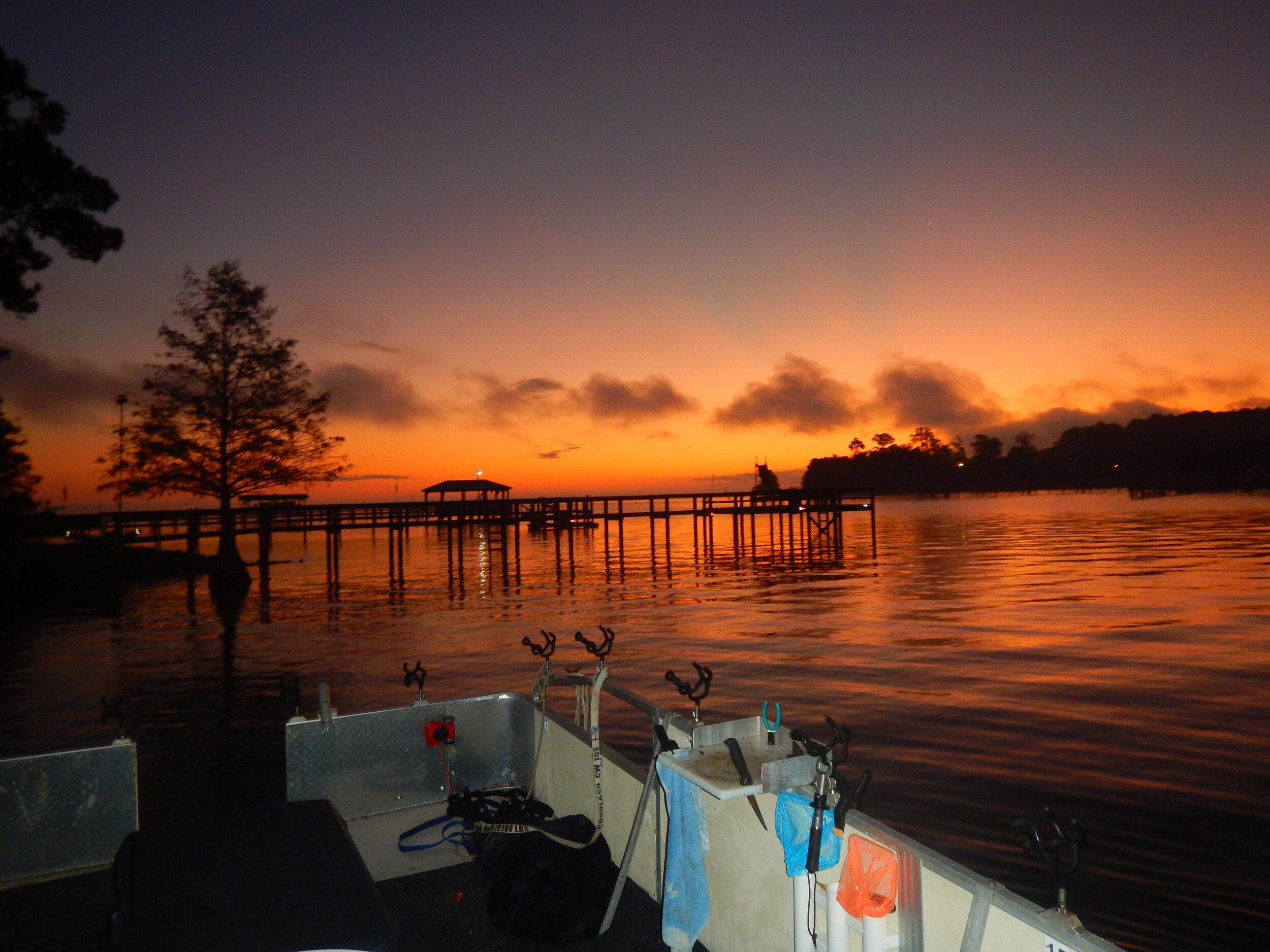
Beyond Fishing: The Santee Cooper system offers various recreational activities beyond fishing. Boating is a popular way to explore the extensive network of lakes and hidden coves. Numerous parks and campgrounds along the shorelines provide opportunities for camping, picnicking, and enjoying the scenic beauty of the area.
Hidden Gem: Explore the Diversion Canal, a waterway that connects Lake Marion and Lake Moultrie. This canal offers excellent opportunities for bass fishing, with abundant submerged structure and strong current attracting fish.
Lake Wateree: A Largemouth Bass Haven
Best Seasons: Spring (March-May) and summer (June-August).
Target Species:
- Largemouth Bass: Lake Wateree is a premier destination for largemouth bass fishing in South Carolina. The numerous coves, rocky shorelines, and underwater vegetation create ideal spawning and feeding grounds for bass. Spring is prime time for targeting pre-spawn and spawning bass, while summer offers opportunities to catch post-spawn bass around deeper structures.
- Crappie, Catfish, and Bream: Lake Wateree boasts healthy populations of crappie, catfish, and bream alongside its renowned largemouth bass fishery. Crappie fishing thrives near sunken brushpiles and docks in spring and fall. Catfish, particularly channel catfish and blue catfish, can be targeted year-round using bottom fishing techniques with live bait or catfish dough bait. Bream are plentiful in the lake’s shallower areas, offering light tackle fun for the whole family.
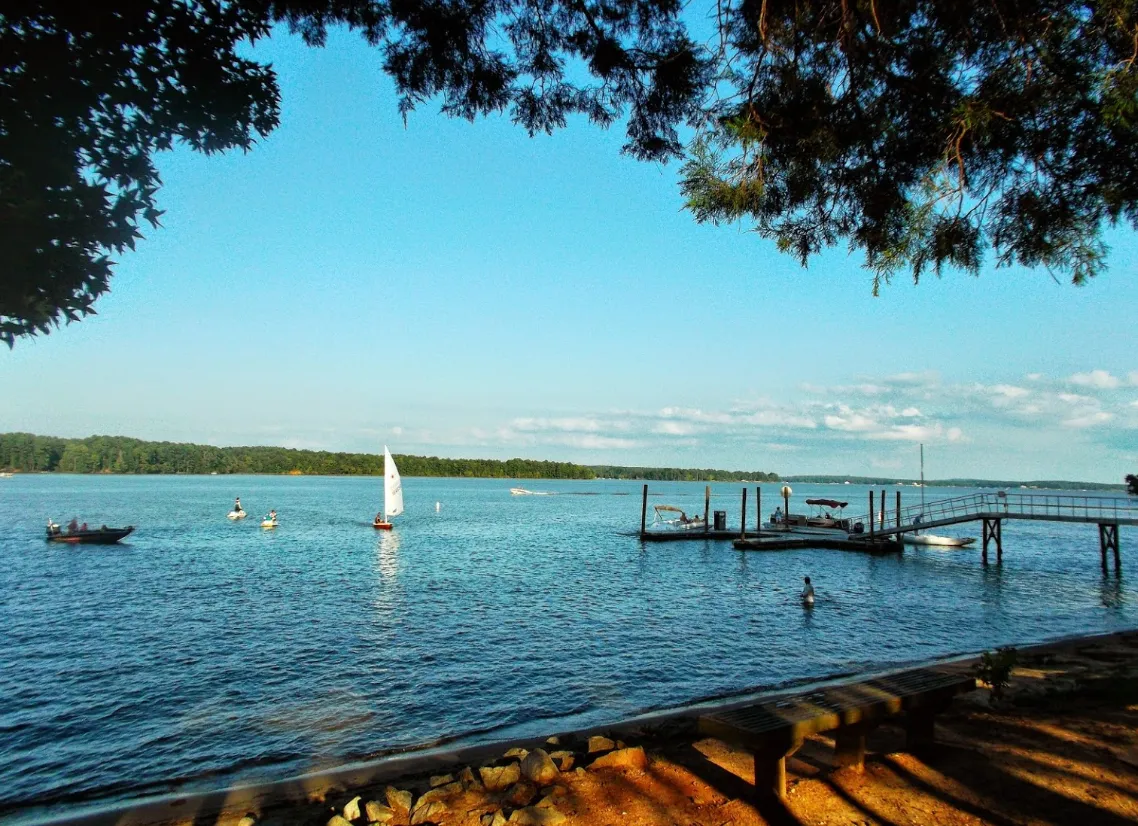
Beyond Fishing: Lake Wateree State Park provides convenient access to the lake with boat ramps, fishing piers, and a campground. Hiking and biking trails weave through the park, offering scenic views and opportunities to explore the surrounding woodlands. Wildlife observation is another popular activity, with bald eagles, osprey, and deer commonly spotted in the area.
Insider Tip: Lake Wateree’s water levels can fluctuate depending on rainfall and hydropower generation. Staying informed about current water levels can help you adjust your fishing strategies and choose appropriate boat launches.
Murrells Inlet: A Saltwater Fishing Paradise
Best Seasons: Year-round, with peak seasons for specific species: spring (March-May) for redfish and speckled trout, fall (September-November) for flounder and black drum.
Target Species:
- Redfish, Speckled Trout, and Flounder: Murrells Inlet is a renowned destination for inshore saltwater fishing, teeming with various sought-after species. Redfish and speckled trout are prevalent in the spring and summer months around oyster beds, salt marshes, and tidal creeks. Flounder fishing thrives in the fall and winter as these flatfish migrate inshore to warmer waters.
- Black Drum: Black drum, a powerful fish known for its fight, can be targeted year-round in nearshore waters and around jetties. They are often attracted to crab pots or bait fished near the bottom.

Beyond Fishing: Murrells Inlet offers a variety of activities beyond fishing. Boat tours are a popular option, allowing you to explore the intricate network of tidal creeks and observe dolphins, sea turtles, and other marine life. The Murrells Inlet Marsh Walk provides a unique opportunity to explore the salt marsh ecosystem on a raised boardwalk. The town itself boasts numerous seafood restaurants serving fresh, local catches.
Hidden Gem: Explore the nearby Pawleys Island. This barrier island offers pristine beaches for swimming and shelling, along with opportunities for surf fishing. Fishing from the beach can be productive for species like whiting, bluefish, and pompano.
Charleston Harbor: A Historic Fishing Hub
Best Seasons: Year-round, with spring (March-May) and summer (June-August) being the most productive for inshore species.
Target Species:
- Redfish, Spotted Sea Trout, and Flounder: Similar to Murrells Inlet, Charleston Harbor boasts excellent inshore fishing opportunities. Redfish and spotted sea trout are prevalent targets throughout the year, with spring and summer offering prime fishing around oyster beds, artificial reefs, and tidal creeks. Flounder fishing can be productive in the fall and winter months.
- Sheepshead: Sheepshead, a unique-looking fish with prominent teeth, is another popular catch in Charleston Harbor. They are often targeted during the winter months around bridges, jetties, and other structures with barnacles, their primary food source.
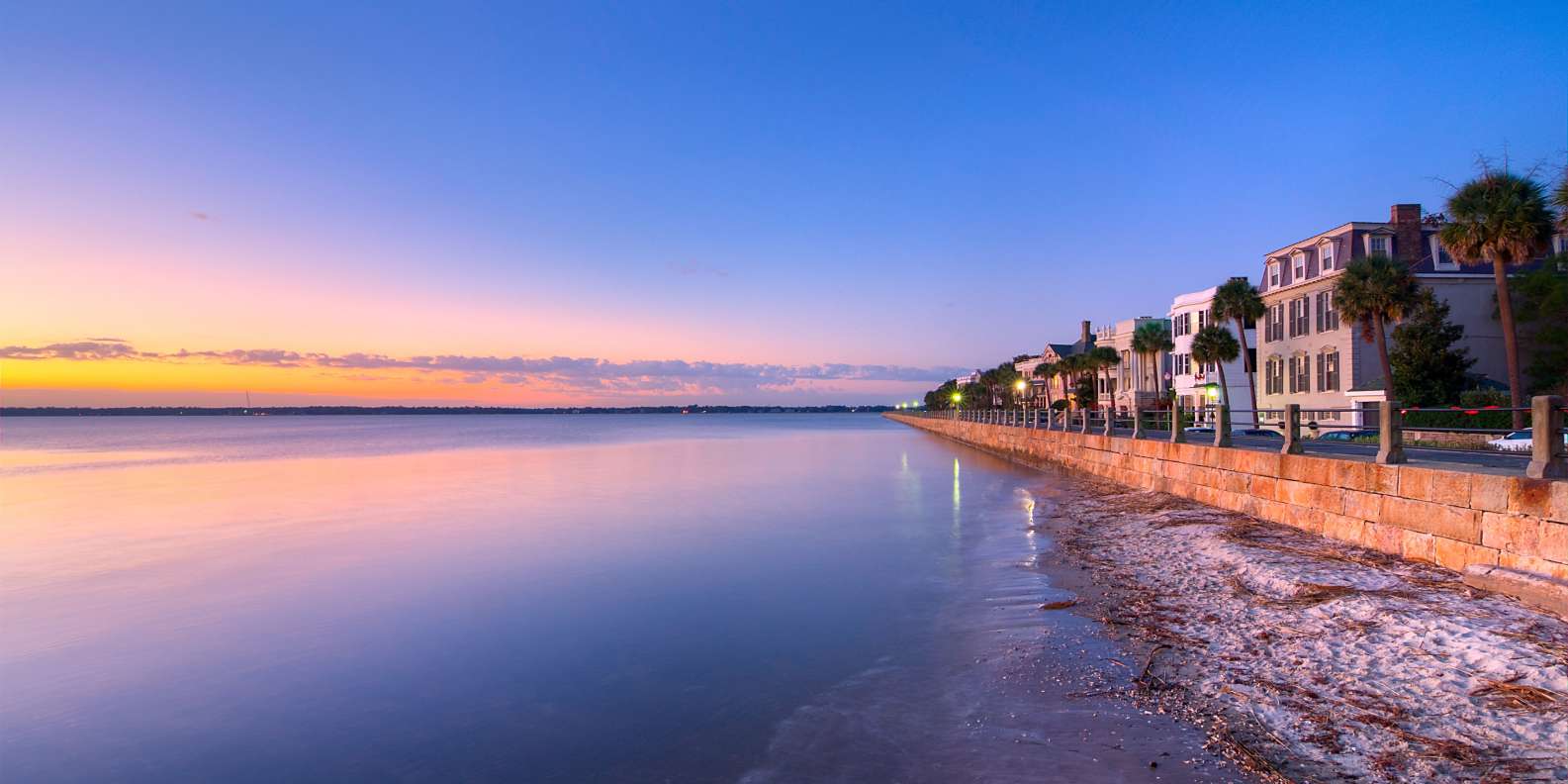
Beyond Fishing: Charleston’s rich history and cultural scene complement the excellent fishing opportunities. A trip to Charleston wouldn’t be complete without exploring the historic district with its charming architecture and cobblestone streets. Horse-drawn carriage tours, carriage rides, and ghost tours offer unique ways to experience the city’s history. For a touch of nature, explore Magnolia Plantation and Gardens, a beautiful example of a Southern antebellum plantation with stunning gardens.
Insider Tip: Charleston Harbor can be quite busy with commercial and recreational boat traffic. Be aware of your surroundings and adhere to boating safety regulations. Hiring a local fishing guide familiar with the harbor’s currents and productive fishing spots can be beneficial, especially for first-time visitors.
Lake Jocassee: A Mountain Oasis for Trout Fishing
Best Seasons: Year-round, with spring (March-May) and fall (September-November) being particularly productive for trout.
Target Species:
- Trout (Rainbow, Brown, and Brook): Nestled in the breathtaking Blue Ridge Mountains, Lake Jocassee is a haven for trout fishing. The lake’s deep, cool waters and rocky shorelines provide ideal habitat for rainbow trout, brown trout, and brook trout. Spring and fall offer prime opportunities to target these prized fish, with various techniques like fly fishing with nymphs and streamers or spin fishing with inline spinners proving effective.
- Smallmouth Bass and Largemouth Bass: While trout are the main attraction, Lake Jocassee shouldn’t be overlooked for bass fishing. Healthy populations of smallmouth bass and largemouth bass can be found throughout the lake. Smallmouth bass thrive around rocky outcrops and submerged structure, while largemouth bass prefer shallower coves with abundant vegetation. Fall is a prime time to target both bass species as they feed heavily before winter.
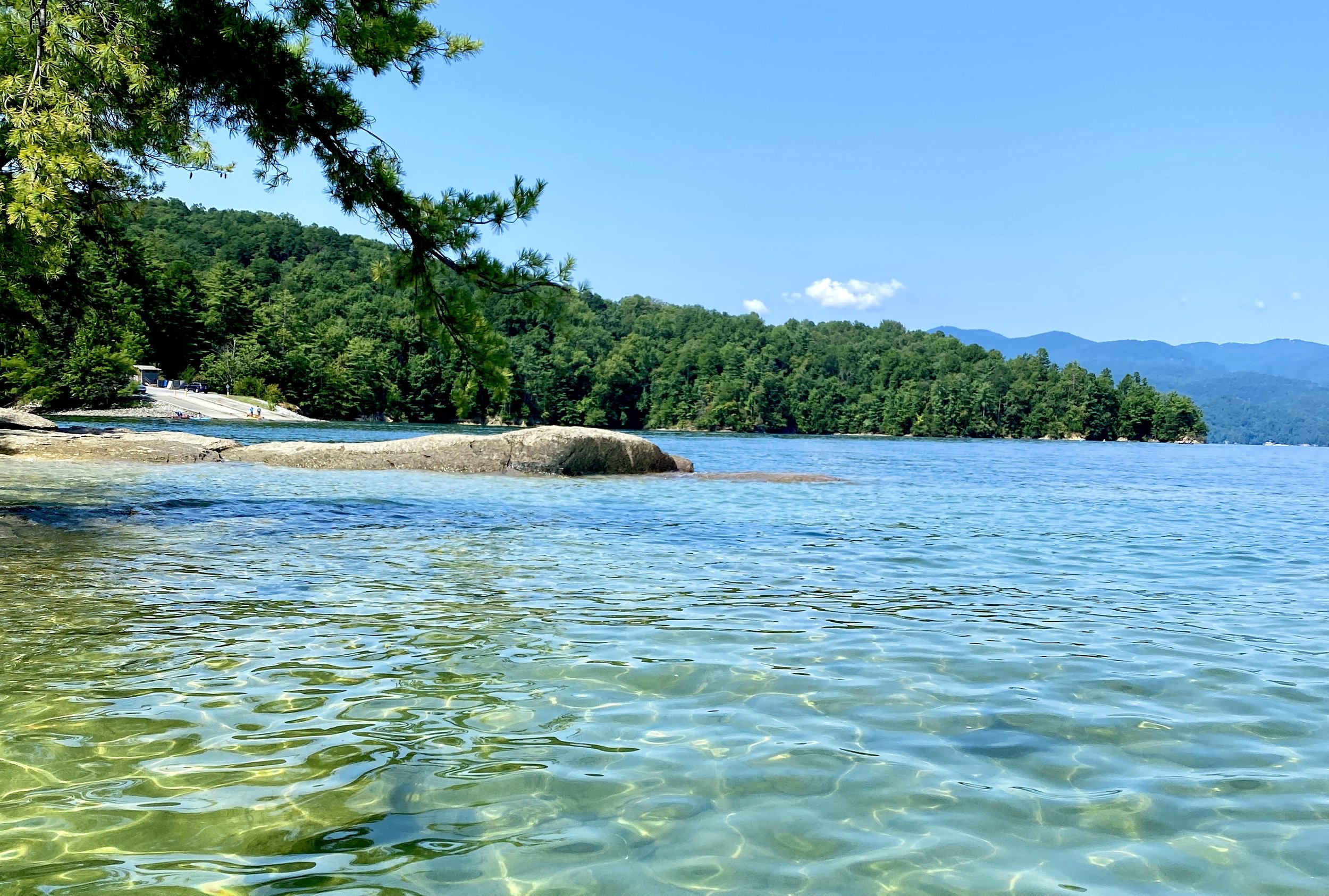
Beyond Fishing: Lake Jocassee’s stunning mountain scenery provides a serene escape for outdoor enthusiasts. Boating is a popular activity, allowing you to explore the lake’s hidden coves and immerse yourself in the natural beauty. Kayaking offers a quieter way to navigate the lake and observe the diverse wildlife, including bald eagles, osprey, and otters. Hiking trails wind through the surrounding mountains, offering breathtaking views and opportunities to connect with nature.
Insider Tip: Due to Lake Jocassee’s location and higher elevation, water temperatures can be cooler than other parts of South Carolina. Dressing in layers and adjusting your fishing techniques for cooler water conditions is essential. Several marinas and outfitters are located near the lake, offering boat rentals, fishing guides, and local fishing knowledge.
South Carolina’s diverse fishing scene caters to anglers of all skill levels and preferences. Whether you’re casting a line for trophy redfish in the saltwater havens of Murrells Inlet or Charleston Harbor, battling hard-fighting largemouth bass in the vast reservoirs like Lake Murray and Santee Cooper Lakes, or seeking the serenity of fly fishing for trout in the cool waters of Lake Jocassee, South Carolina offers an unforgettable fishing adventure. So, pack your tackle box, grab your fishing license, and embark on a journey to explore the hidden gems and renowned fisheries that make South Carolina a true angler’s paradise.

Robert Smith is the proud owner of Bait Barrels and Bows, a premier fishing sports store established in 1989. With over three decades of experience in the industry, Robert has honed his skills to become an expert angler, sharing his vast knowledge and passion for fishing with enthusiasts around the world. Through his store and writings, Robert provides invaluable tips and guidance, helping both novice and seasoned anglers improve their techniques and enjoy the sport to its fullest. His commitment to the fishing community is evident in his dedication to quality products and excellent customer service.

